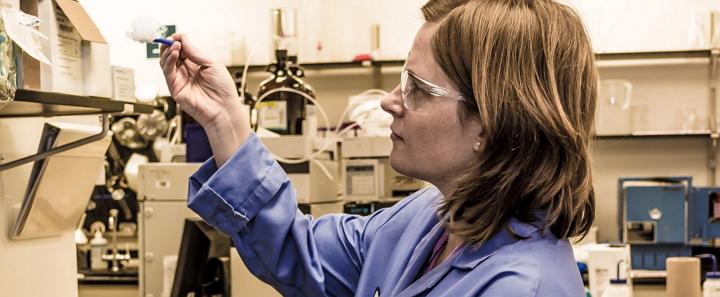
The nanocellulose, a bio-derived nanomaterial, is expected to be of particular interest to the automotive and mold manufacturing industries, and the researchers say they’ve arrived at materials which have strengths similar to aluminum – and that are made at a competitive cost to traditional materials.
While carbon fibers have been used as a reinforcing material for 3D printing resins, high cost and the dependency of the fibers on petroleum led researchers at ORNL to research more economical alternatives.
“Carbon fibers are extremely strong and lightweight but expensive to produce and used only in the highest end applications such as aerospace and luxury vehicles. Nanocellulose is as strong as carbon fiber and are lower weight,” Retsina says.
The material is already in production and API calls it BioPlus. The product is a suite of nanocellulose materials made at the company’s plant in Thomaston, Georgia.
“With our manufacturing breakthrough, nanocellulose is significantly more cost competitive than carbon fibers,” Retsina added. “We didn’t invent nanocellulose; we made it less expensive, thermally stable at high temperatures, and gave it functionality to blend with hydrophobic polymers – thereby enabling market applications and opening the road to commercial production.”
Retsina says the material produced at the Georgia plant will be used by ORNL to 3D print a large scale component using the “Big Area Additive Manufacturing” (BAAM) 3D printing machine.
At some 500 to 1000 times faster than most large scale printers, the prototype BAAM machine was developed by ORNL in partnership with Cincinnati Incorporated. The enormous printer is based on Cincinnati’s commercial laser cutting technology and uses a gantry-style platform from that machine.
ORNL has also installed the largest version of the 3D BAAM printer in the world, and it’s capable of printing objects up to 20 feet long, 8 feet wide and 6 feet tall.
“We are excited about the opportunity to work with American Process Inc. to develop nanocellulose reinforced polymers with the objective of achieving a completely bio-derived, new structural material for additive manufacturing,” says Craig Blue, the Director of the Advanced Manufacturing Program and Manufacturing Demonstration Facility at ORNL.
The research was supported by the Advanced Manufacturing Office within the Department of Energy.
Can you envision applications for this engineered biomaterial? What kind of objects would you build if you had access to a plastic material that was both cheaper, and every bit as strong, as carbon fiber? Let us know in the Nanocellulose forum thread on 3DPB.com.